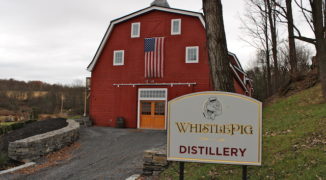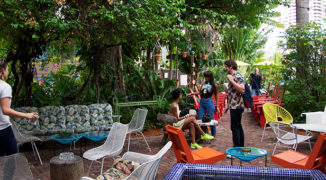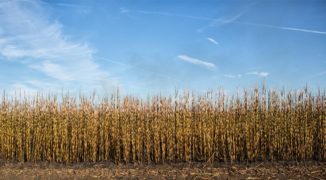About an hour’s drive outside the frenetic hubbub of central Mexico City, trucks make their way through a tightly secured perimeter while guards direct traffic and countless workers hum in the background. It’s a Tuesday morning, and the sprawling Bacardi blending facility is buzzing, from the unloading of rum from trucks to the gaggle of fluorescent vest-clad tourists ogling stacks of barrels.
Though the rum itself comes from Bacardi’s distillery in Puebla, this facility is where unaged, unblended and unfiltered liquid is turned into the products that Bacardi touts in its portfolio. While the facility has been here since 1931, it was almost lost entirely in the 1957 earthquake that leveled much of Mexico City. (Many barrels were lost, buildings were rebuilt, and visitors now sit through a brief orientation that includes what to do in the event of an earthquake, though the current structure was built specifically to withstand such an event. Oh, and barrels are stored vertically rather than horizontally in the aging warehouse — they roll less that way.)
Though it’s been decades since Don Facundo himself was at the helm of Bacardi’s blends, his legacy on the brand is still apparent through their blending processes. Enrique Comas, a sixth-generation Bacardi descendant and the company’s Senior Manager of Trade Advocacy for the Latin American and Caribbean, explains that Don Facundo’s preferred method involved using not one, but two base spirits: a 70-75%-ABV aguardiente and a lighter, more delicate “redistillado” (redistilled) base. “Don Facundo said that, basically, with one light and delicate rum base and one very flavorful rum base, he could blend anything he wanted in the middle,” Comas explains to our group.
“In the 1860s in Cuba, rum tended to be quite harsh and quite crude — there were very few refinement techniques,” says Comas. “No one was really doing what was being done in Europe, which was aging different spirit bases and then blending them together: developing different flavor profiles in different barrels and in different batches, and then blending them. That was the key to the process that Don Facundo put in place. He made his aguardiente and his redistillado; he then used his white oak barrels to develop the flavor of those rum bases, he used charcoal to shape the flavor of those rum bases.”
A tour through the facility not only shines a light on Bacardi’s blending process (and Don Facundo’s preferred techniques), but also on the company’s renewed focus on sustainability. Old barrels, once they’ve lost their ability to impart flavor, are broken down into mulch for composting, and rainwater is collected in the sloping roof for use in cleaning.
While some might assume that reusing barrels would yield less flavor from the wood, Comas explains it like re-using a teabag. “If you have three or four cups of boiling water, you can make four cups of tea with the same intensity of flavor, but every time you move the teabag from one to the other, it’s going to take longer for the leaves to give the same intensity of flavor. So every time you use a barrel, it will take longer to achieve the flavor profile,” he says. And that’s the heart of the intricate balancing act performed by blenders every day, he says. “The interesting thing is for the blenders to play with the age of the barrel to develop different flavors. So when they’re blending, they’ll say, I want some oak, I want some spices that come from oak, and I want some caramel and vanilla, so I’m going to use rums from this type of barrel, but I also want dried fruit, so I don’t want a new barrel because the oak will have overtaken the fruit. It’s a really interesting balancing act they play when they select the barrels that they use.”
Though the sprawling, high-tech facility has certainly come a long way from the days of Don Facundo tinkering with distillation techniques at his home in Cuba, there’s no doubt that his original distilling and blending philosophies, from the type of oak used to the application of charcoal filtration, are alive and well. We suppose the spirit of this operation can’t be shaken — not even by an earthquake.






